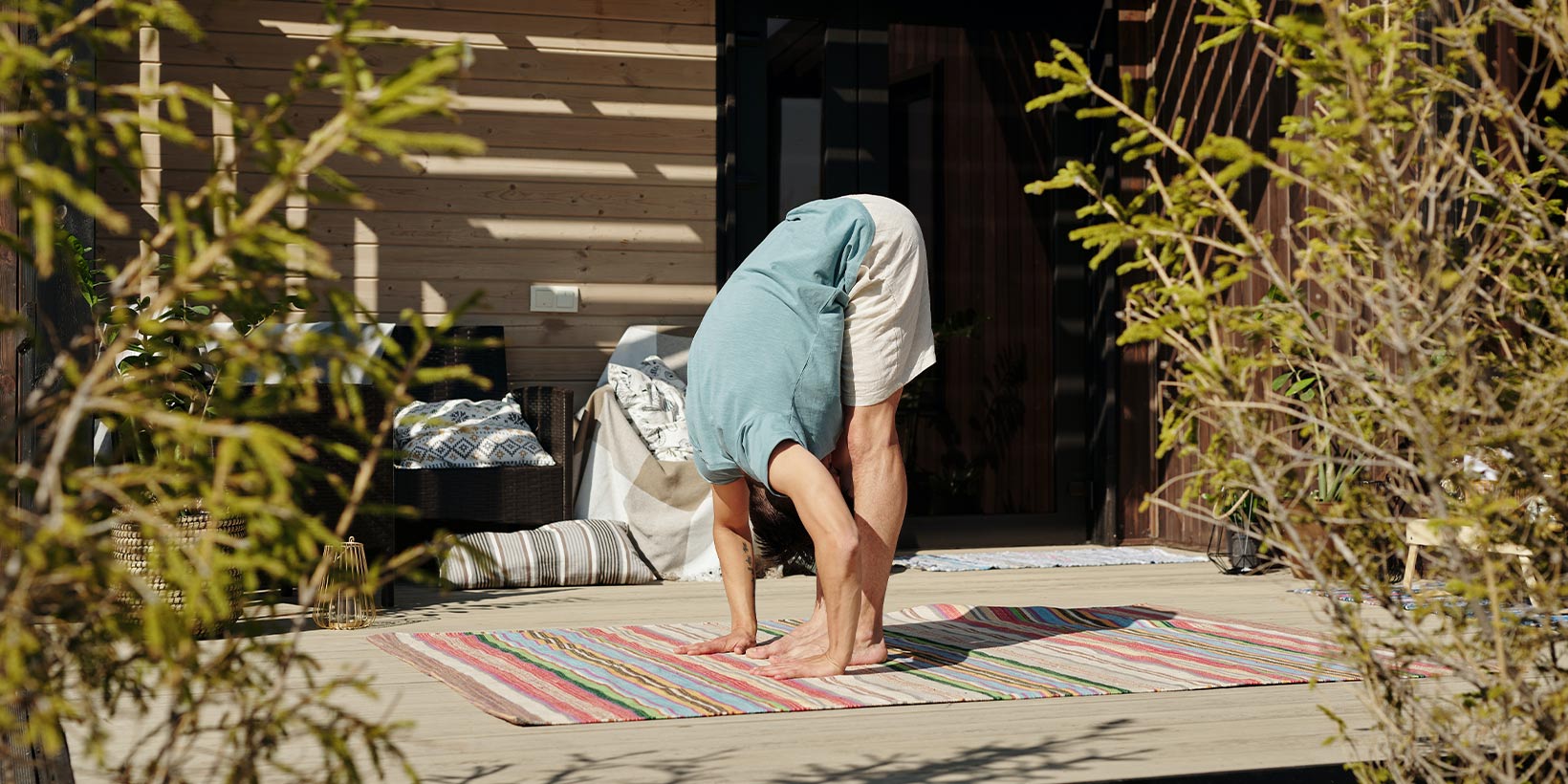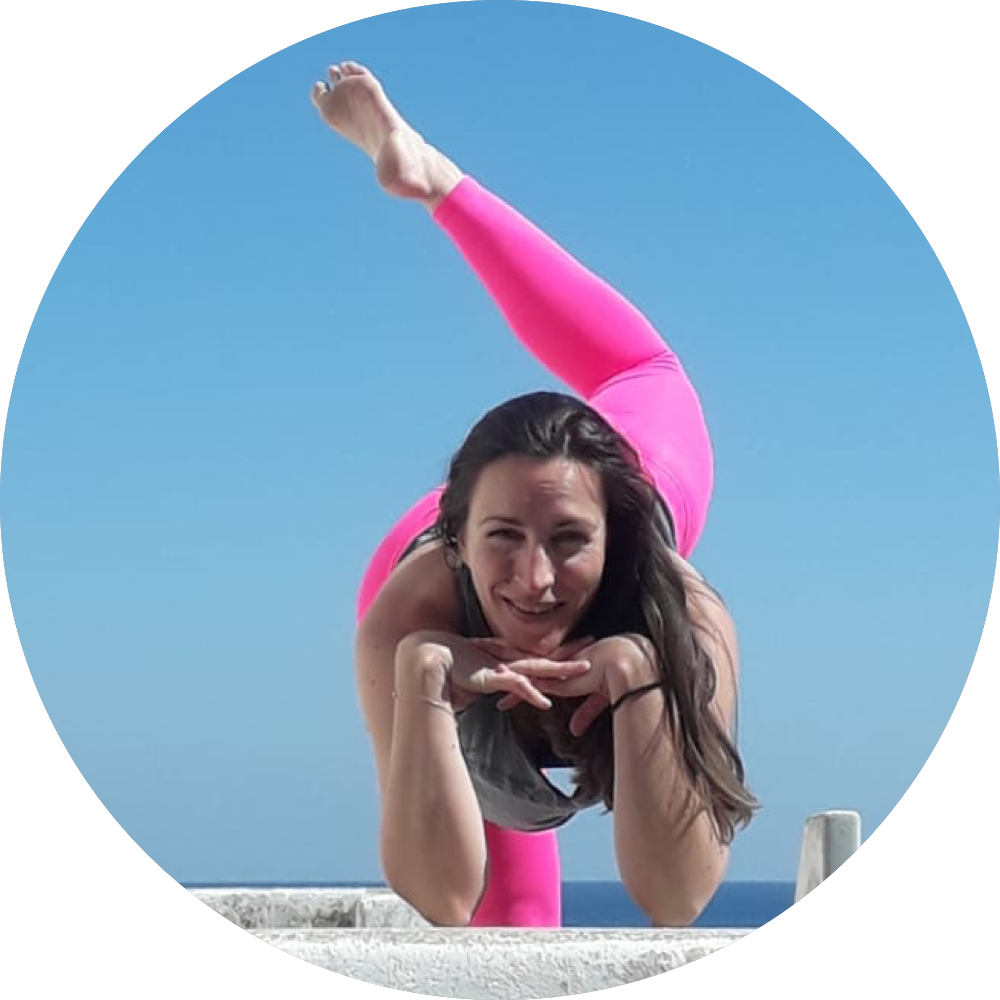
What Is Fascia and Why Is It So
Fascia-nating?
I had never heard about fascias until I enrolled for my 200 Hours’ Yoga Teacher Training and it made me want to learn more about anatomy and to share about the wonders of our body and the continuous science breakthrough regarding this fascinating new organ.
The definition of Fascia
I had never heard about fascias before I enrolled for my 200 Hours’ Yoga Teacher Training. It was like a whole new world opened up in front of me. They were introduced to me with a simple question that awakened a response feeling instantly in me: “Do you know this delicious feeling when you stretch your body in the morning right after waking up…? Well, this feeling that makes you groan of pleasure is the feeling of your fascia stretching.”
Do you know this delicious feeling when you stretch your body in the morning right after waking up? That groan of pleasure is your fascia stretching.
We all know that feeling in the morning or after sitting or not moving for a long time and then the body extends and we stretched like cats, and it feels so good! At the opposite of that, when we die, the body becomes all stiff as the fascias are not stretched anymore and lose their power of hydration, this is what is also called rigor mortis.
It is quite a simple presentation but it all made sense to me. Later in the training, we got to dig much deeper into the science and anatomy and to understand more about the importance of fascia in the body functioning and for our overall health.
Here is a definition by Thomas Meyers, founder of Anatomy Trains (link) and who created the concept of fascia trains/lines often used in osteopathy:
Fascia is a network of connective tissue, without beginning and end, which encloses everything in the whole body, from muscles and bones, to organs and cells.
What makes it fasci-a-nating is how recent is the scientific discovery of the importance of fascia and how the researches keep showing new progress and breakthrough (these new research and data will be the object of another article on momoblog). There is still so much to discover, so much we don’t know yet! In fact, fascia has been ignored for a really long time. Westerner researchers thought it was simply part of the muscles, merely filling the body. Now many of them believe fascia is an organ, even a super organ since it would be the largest and the only one that touches every other body systems and all our cells at once! Pretty amazing right? Even for those who are not anatomy nerds like me.
How does Fascia work?
Here are some facts to help you understand better what they do:
So, fascia is a connective tissue made of fibres and water and acts like a net around our muscles, organs and cells: literally everything in the body.
There are three types of fascia:
- The superficial fascia: a bodysuit or net that separates the skin from the muscles, made of loose conjunctive tissues: collagen and elastic fibres.
- The deep fascia: surrounding our muscles, cells, organs, etc. is a thicker layer surrounding the musculoskeletal system: it covers our muscles, bones, cartilage, tendons, blood vessels and nerves.
- Visceral fascia: around all the organs
It is a lubricating tissue that contains Acid Hyaluronic (HA) to all body surfaces that need to slide over one another without creating any friction or tears.
Fascia provides structure and support throughout our body. It holds the muscles together, which allows them to contract and stretch.
Fascia also stabilizes the body structures and gives the body strength. It helps with joint stability and movement, and it improves blood/nerves circulation.
I know it all sounds very scientific but once we understand the way it functions and their key role, it is easier to implement a few tips to keep your fascia healthy and your overall health great.
Fascia provides an environment that enables the different body systems to work together. It makes our body a tensegrity structure.
And… what is tensegrity?
Very good question! Let’s first start with the Wikipedia definition:
Tensegrity is “a structural principle based on a system of isolated components under compression inside a network of continuous tension, and arranged in such a way that the compressed members (usually bars or struts) do not touch each other while the pre-stressed tensioned members (usually cables or tendons) delineate the system spatially”
Hmm… It sounds rather complicated but what it means is that our body functions and moves like a whole; like an architectural structure where the tension is ideally distributed everywhere equally. The term “tensegrity” was actually used for the first time by an architect named Fuller in 1955. Later in the 2000’s, the cell biologist Donal Ingber presented the body as a cellular tensegrity structure made of our 206 bones and muscles and fascias working together in compression and tension and tensility. The body worker, Tom Myers explains the concept of tensegrity by showing a wood and elastic structure, commonly used in architecture. He actually worked with the architect Fuller before he became a body specialist. He first uses the analogy of a house to talk about the body and the way it is structured, by layers or bricks, but then explains how the bones floats in this body of compression and moves in way more complex and dynamic way than in a building.
So what does it mean? Simply that the tensions and sometimes pain we feel in a specific part of our body can have their source somewhere else in the body. For example, this stingy tension in my neck is actually rooted further down in my lower back. Imagine an orange net and the way the tension shifts as you move the oranges inside! This was the analogy that worked best to make me understand the way fascia works when I did my anatomy training.
The tensions and pain we feel in one part of the body can often have their source somewhere else. Think of fascia like an orange net: when you shift one orange, the tension changes across the entire structure.
Knowing about fascias and how they interact with our whole body structure helps understand our body better and consequently, to treat it better and to work with movement and stretch in a appropriate way.
Therefore, I invite you to try these short myofascial release exercises
Myofascial meaning muscles and fascia. You can read more and find more practices on Yoga Medicine where Tiffany Cruikshank explains how to identify common areas and trigger points in the body in order to enrich the yoga practice and teaching. She also has a great podcast if you are interested in digging more (I recommend this conversation with Dr. Robert Schleip on Fascia and Yoga).

And without further ado, here is a little routine to stretch your fascia and release tensions throughout the body
For these exercises, the only thing you need is a tennis ball or a massage ball -I once saw someone using an apple and I wouldn’t recommend it unless you plan on having compote for your after session snack.
The ball will help you perform an auto-massage on parts of your body you cannot massage yourself. It will help release tension and you will be able to control the tension you want to apply on the ball by using your body as a tension regulator.
In these exercises, always try to be mindful, take your time and explore, feel, breathe. Your breath will guide you all along. Exhale deeply to help release tension and start with one side of the body, take the time, move slowly. You can even time it. For example I like to spend at least 10 minutes on each zone. For the shoulder work, I encourage you to spend at least 10 minutes on each side but it is also ok if it’s less time (or more)!
Release tensions in the shoulders and neck
Find a free wall spot in your house and place the ball in between your upper back and the wall. Start moving gently; try to make the ball move on the top of your right shoulder. Try to make the ball all around the shoulder blade, explore the muscles along the spine. It’s better to avoid the bones and focus on the muscles and even more on fascia. When you feel you hit a tension spot, try to stay on it, and see if you can apply a bit more pressure with your body; use the ball and the weight of your body to help release the tension. Sometimes, you can really feel the fascia softening. Think of the orange net 😊






